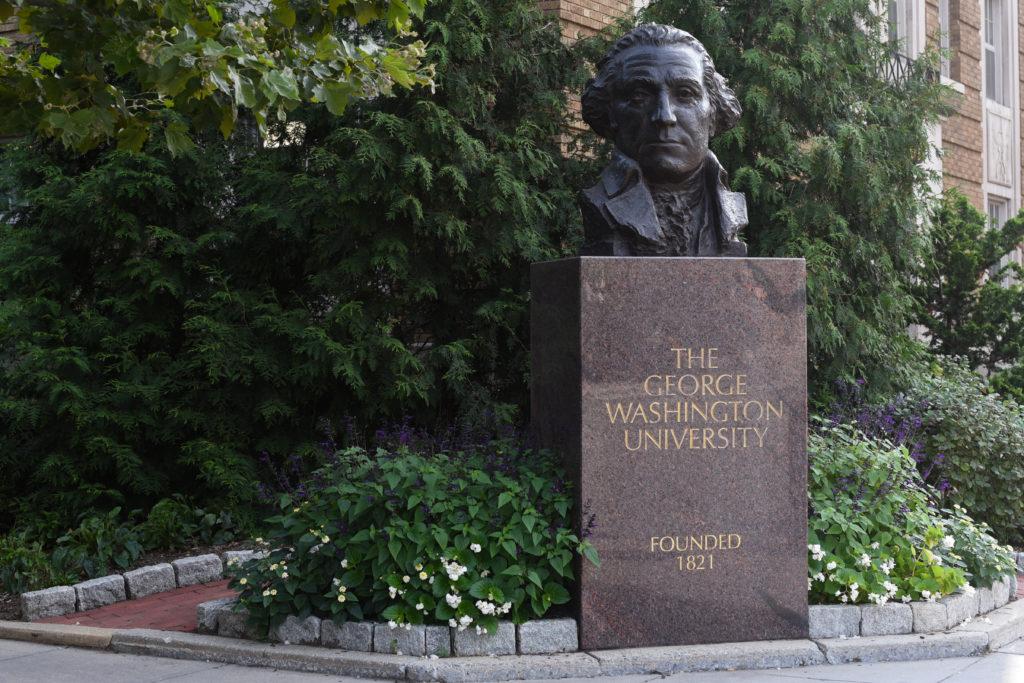GW’s undergraduate population fell by nearly 8 percent this year alongside a more than 20 percent decline in the overall international student population.
Jay Goff, the vice provost of enrollment and student success, said the University enrolled 11,104 undergraduates this year – a 7.7 percent annual decrease – while graduate enrollment fell by just 0.2 percent as many students changed their academic plans during the pandemic. Administrators plan to begin publicizing some of the enrollment census data later this week, which is used for official statistics, he said.
Officials released regular undergraduate admission decisions just as classes moved online in spring 2020, but administrators tapped into GW’s waitlist and accepted additional transfer students to mitigate the impact of the pandemic on the University’s enrollment.
“We targeted every applicant who met our academic criteria and also tried to make sure we supported our diversity goals,” Goff said. “Those were two primary factors as we evaluated the waitlist and transfer applicants.”
He said GW enrolled 2,274 new “residential” undergraduates this year, falling short of officials’ pre-pandemic target by nearly 300 students. Officials had sought to enroll a smaller incoming class of 2,550 first-year freshmen and transfer undergraduates as part of a multiyear plan to decrease the undergraduate population by nearly 20 percent, which has been halted during the pandemic.
“We did really well with both the academic and diversity outcomes this year,” Goff said. “Some years you do a little bit better than others. I think the focused student outreach work that was done in the enrollment and admissions offices really paid off.”
GW’s total enrollment drop – about 2.9 percent – was far less than the 30 percent drop officials originally projected in May if classes remained online this year. Goff said administrators’ budget projection from the spring was based on limited surveys and feedback from students before final decisions were made for the fall.
[gwh_image id=”1129279″ credit=”Courtesy of the Office of the Provost” align=”none” size=”embedded-img”][/gwh_image]
He said national enrollment trends won’t be known until late November or early December, but GW’s data appears to be similar to other schools based on preliminary estimates.
“In terms of initial reports from schools that went to a complete virtual environment, the pandemic’s impact on our enrollments looks to be about the same or in some cases a little bit better,” Goff said.
Goff said he has “no indication” that GW’s enrollment will change this spring beyond normal trends. Fifteen incoming undergraduates who deferred their admission this fall paid an enrollment deposit for the spring semester last week, he said.
Diversity
Although GW enrolled a smaller incoming class this year, most diversity measures remained stable or improved.
Goff said the proportion of underrepresented minorities in GW’s newest class – comprising students who identify as Black, Hispanic, Native American or Pacific Islander and those with two or more races if one is among those populations – increased from 20 percent to 23 percent.
The proportion of first generation students remained unchanged, while the proportion of Pell Grant recipients increased from 14 percent to 16 percent.
[gwh_image id=”1129280″ credit=”Courtesy of the Office of the Provost” align=”none” size=”embedded-img”][/gwh_image]
Goff said like most universities, GW saw a large drop in international student population as a result of travel restrictions imposed during the pandemic. GW enrolled 860 fewer international students this year, reflecting an annual decline of 20.6 percent, he said.
The undergraduate and graduate international student populations fell 18.4 percent and 18.8 percent, respectively, alongside an 86.2 percent drop in the number of non-degree international students.
“That is something we recognized early on and immediately put activities in place so that we could backfill the anticipated loss in international students with additional domestic students,” he said. “That’s why we looked very heavily into increasing the number of transfer students and we used the domestic student waitlist.”
Academics
Goff said measures of academic standing, including mean GPA, SAT scores and ACT scores, remained relatively constant for the incoming class.
“It is a smaller class, but in terms of its academic talent, it is still one of the top classes to start at GW,” he said.
The proportion of first-year STEM students remained unchanged at 25 percent this year, Goff said. Officials had sought to increase the proportion of STEM majors from 19 percent to 30 percent as part of the now-halted 20/30 Plan.
He said GW saw enrollment growth in law, public health, health sciences and business fields. Goff said all undergraduate colleges’ enrollment fell this year except for the Milken Institute School of Public Health, because students can now enroll in the school immediately rather than during their sophomore year, and the School of Nursing.
[gwh_image id=”1129281″ credit=”Courtesy of the Office of the Provost” align=”none” size=”embedded-img”][/gwh_image]
He added that the Graduate School of Education and Human Development, public health school, School of Business and School of Medicine and Health Sciences saw increases in their graduate student populations.
The law school’s Juris Doctor program enrolled 175 more students this year, an increase of 11.2 percent, Goff said.
“I think it’s an excellent sign,” he said. “It reinforces the tremendous reputation of the law school. Even in this environment, students understand what a high-quality program we offer.”








